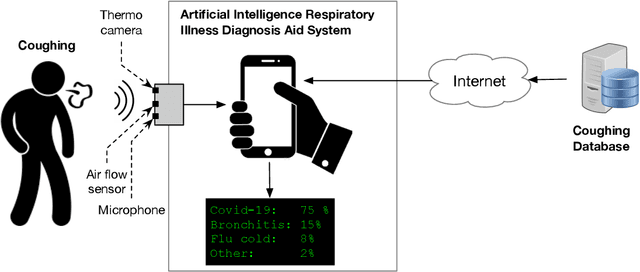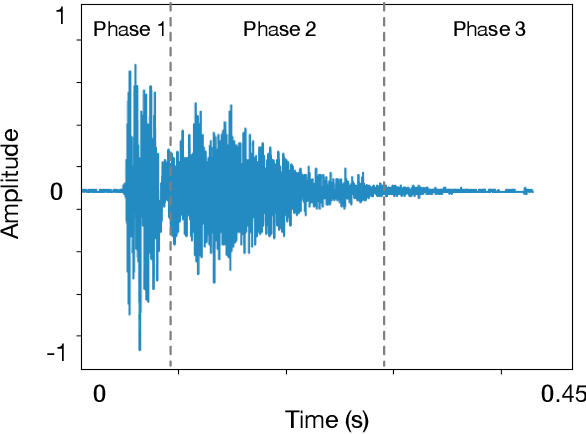Abderrahmane Lakas
GAT-RWOS: Graph Attention-Guided Random Walk Oversampling for Imbalanced Data Classification
Dec 20, 2024Abstract:Class imbalance poses a significant challenge in machine learning (ML), often leading to biased models favouring the majority class. In this paper, we propose GAT-RWOS, a novel graph-based oversampling method that combines the strengths of Graph Attention Networks (GATs) and random walk-based oversampling. GAT-RWOS leverages the attention mechanism of GATs to guide the random walk process, focusing on the most informative neighbourhoods for each minority node. By performing attention-guided random walks and interpolating features along the traversed paths, GAT-RWOS generates synthetic minority samples that expand class boundaries while preserving the original data distribution. Extensive experiments on a diverse set of imbalanced datasets demonstrate the effectiveness of GAT-RWOS in improving classification performance, outperforming state-of-the-art oversampling techniques. The proposed method has the potential to significantly improve the performance of ML models on imbalanced datasets and contribute to the development of more reliable classification systems.
Transformer-based Image and Video Inpainting: Current Challenges and Future Directions
Jun 28, 2024



Abstract:Image inpainting is currently a hot topic within the field of computer vision. It offers a viable solution for various applications, including photographic restoration, video editing, and medical imaging. Deep learning advancements, notably convolutional neural networks (CNNs) and generative adversarial networks (GANs), have significantly enhanced the inpainting task with an improved capability to fill missing or damaged regions in an image or video through the incorporation of contextually appropriate details. These advancements have improved other aspects, including efficiency, information preservation, and achieving both realistic textures and structures. Recently, visual transformers have been exploited and offer some improvements to image or video inpainting. The advent of transformer-based architectures, which were initially designed for natural language processing, has also been integrated into computer vision tasks. These methods utilize self-attention mechanisms that excel in capturing long-range dependencies within data; therefore, they are particularly effective for tasks requiring a comprehensive understanding of the global context of an image or video. In this paper, we provide a comprehensive review of the current image or video inpainting approaches, with a specific focus on transformer-based techniques, with the goal to highlight the significant improvements and provide a guideline for new researchers in the field of image or video inpainting using visual transformers. We categorized the transformer-based techniques by their architectural configurations, types of damage, and performance metrics. Furthermore, we present an organized synthesis of the current challenges, and suggest directions for future research in the field of image or video inpainting.
Advanced Artificial Intelligence Algorithms in Cochlear Implants: Review of Healthcare Strategies, Challenges, and Perspectives
Mar 17, 2024Abstract:Automatic speech recognition (ASR) plays a pivotal role in our daily lives, offering utility not only for interacting with machines but also for facilitating communication for individuals with either partial or profound hearing impairments. The process involves receiving the speech signal in analogue form, followed by various signal processing algorithms to make it compatible with devices of limited capacity, such as cochlear implants (CIs). Unfortunately, these implants, equipped with a finite number of electrodes, often result in speech distortion during synthesis. Despite efforts by researchers to enhance received speech quality using various state-of-the-art signal processing techniques, challenges persist, especially in scenarios involving multiple sources of speech, environmental noise, and other circumstances. The advent of new artificial intelligence (AI) methods has ushered in cutting-edge strategies to address the limitations and difficulties associated with traditional signal processing techniques dedicated to CIs. This review aims to comprehensively review advancements in CI-based ASR and speech enhancement, among other related aspects. The primary objective is to provide a thorough overview of metrics and datasets, exploring the capabilities of AI algorithms in this biomedical field, summarizing and commenting on the best results obtained. Additionally, the review will delve into potential applications and suggest future directions to bridge existing research gaps in this domain.
End-to-End AI-Based Point-of-Care Diagnosis System for Classifying Respiratory Illnesses and Early Detection of COVID-19
Jun 28, 2020



Abstract:Respiratory symptoms can be a caused by different underlying conditions, and are often caused by viral infections, such as Influenza-like illnesses or other emerging viruses like the Coronavirus. These respiratory viruses, often, have common symptoms, including coughing, high temperature, congested nose, and difficulty breathing. However, early diagnosis of the type of the virus, can be crucial, especially in cases such as the recent COVID-19 pandemic. One of the factors that contributed to the spread of the pandemic, was the late diagnosis or confusing it with regular flu-like symptoms. Science has proved that one of the possible differentiators of the underlying causes of these different respiratory diseases is coughing, which comes in different types and forms. Therefore, a reliable lab-free tool for early and more accurate diagnosis that can differentiate between different respiratory diseases is very much needed. This paper proposes an end-to-end portable system that can record data from patients with symptom, including coughs (voluntary or involuntary) and translate them into health data for diagnosis, and with the aid of machine learning, classify them into different respiratory illnesses, including COVID-19. With the ongoing efforts to stop the spread of the COVID-19 disease everywhere today, and against similar diseases in the future, our proposed low cost and user-friendly solution can play an important part in the early diagnosis.
 Add to Chrome
Add to Chrome Add to Firefox
Add to Firefox Add to Edge
Add to Edge